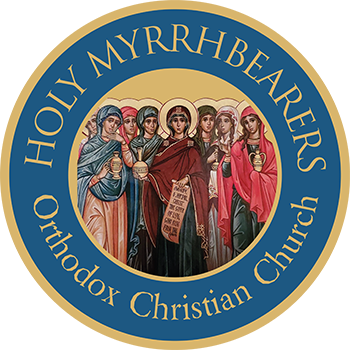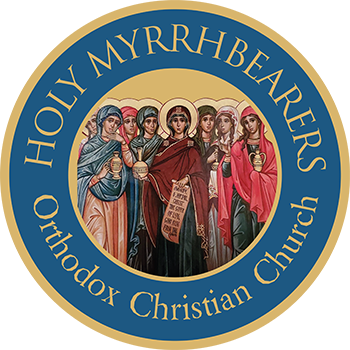During Great Lent, of all the things that we do, the two that stand out the most are indeed “prayer and fasting.” One of the greatest efforts that we put into Lent is “keeping the fast” and we spend a lot of time and energy, attending to what and how much we eat. Also during Lent there is a greater emphasis on prayer, especially prayer in the Church with the additional “special” services and the longer version of the regular services. We even have special prayers that we say at home every day only during Great Lent (most notably the prayer of St Ephraim, “O Lord and Master of my Life…”) The reason for this, of course, is that Great Lent is a time when we chiefly attend to strengthening our faith, and so it is only logical that these two activities, prayer and fasting, should be emphasized.
If we only fast, but don’t pray, then the fast becomes tiresome and boring – it is even inconvenient and uncomfortable.
If you are having trouble fasting, then the first thing you need ask yourself is, “Am I praying?” By the same token, when someone goes to the extra services and adds the extra prayers to their daily rule, but they don’t fast, then it becomes routine and boring. Then their attention falls off and the prayers become nothing but a string of words.
And in the services, the mind wanders far off (even sometimes into dark and sinful places).
The first question to ask if you encounter difficulty praying is “Am I fasting?” Really, we must use both prayer and fasting if we wish to make any spiritual progress – just as we must use both feet if we wish to walk anywhere.
Today also we remember St John of the Ladder. St John was the abbot of the monastery of Mt Sinai where Moses received the Tablets of the Law from the hand of God. At the request of one of his monastic brethren, St John wrote down the principles by which he guided his monks. These principles today are preserved for us and known as the “Ladder of Divine Ascent”. In this book, “The Ladder”, St John describes a gradual, step by step climb into the Kingdom of Heaven, building each step on the foundation of the ones that went before. These steps are the various virtues that we strive to acquire by our spiritual labors. What St John has given us is a system by which one virtue leads to another and then another and another – each step resting on the ones before until finally, one reaches the heavenly gates. There is an icon in the Church of this Ladder of Divine Ascent which I would encourage you to look at today before you depart. It is quite a striking icon in which we see various persons climbing this ladder of virtues striving to enter the Kingdom of Heaven. We also see the demons flocking around these spiritual stragglers trying to pull or prod them off the ladder by means of the passions with which they typically displace the virtues and enslave us to their will.
This is how St. John of the Ladder shows us an example of how virtues are interrelated, and how one cannot bring benefit without the other: he says – “the chief of all virtues is prayer, and their foundation is fasting. If we should sow the seeds of prayer without having diminished our bodies through fasting, then instead of truth we will bear the fruits of sin.
By the same token, if the body is diminished through fasting, but the soul is not cultivated with prayer, spiritual reading, and humbleness, then fasting becomes the parent of a multitude of passions: pride, vanity, contempt, and others.”
When this happens the spiritual straggler might even fall from this ladder and end up imprisoned by the demons who successfully tempt him. We are reminded by this icon that no matter how far we ascend in our spiritual life, our struggle against the demons and their temptations continues, unrelenting. St John wrote his “ladder” for those in the monastic life, but even for those of us in the world it is useful, for we can see the basic virtues that support those more advanced, so that we are not deceived into thinking that we have progressed more than we actually have.
But there is another ladder that is provided for us today in the Gospel – one that is not designed for monastics but rather for each of us who takes up his cross to follow Christ. This ladder is the ladder of the beatitudes that we heard read today (and which we sing at every Divine Liturgy). On this ladder we begin with the step of humility (blessed are the poor in spirit) which is the foundation of every other virtue. From humility we proceed to repentance (blessed are those who mourn (for their sins)), and to meekness. We proceed again to the love of righteousness, mercy and purity. We then ascend to the place of bringing peace (even as our Lord did) and reaping as a result persecution and even death. That death, however, is not a defeat, but is a triumph for in His death, He conquered death and has made death for us, the door to eternal life.
Therefore my brothers and sisters, we are reminded that we must proceed in our spiritual life step by step, never getting ahead of ourselves and never relaxing our spiritual vigilance even for a moment. We need both of our feet – prayer and fasting – and we must exercise them both throughout the whole of our lives.
There should never be a moment in this life when we cease praying and never a moment when we abandon fasting. Step by step we proceed towards the Kingdom of Heaven; rung by rung we ascend the Ladder of Divine Ascent. Right foot, left foot – by prayer and fasting – we progress step by step, into the Kingdom of God. So remember my brethren, Christ is still King!!





